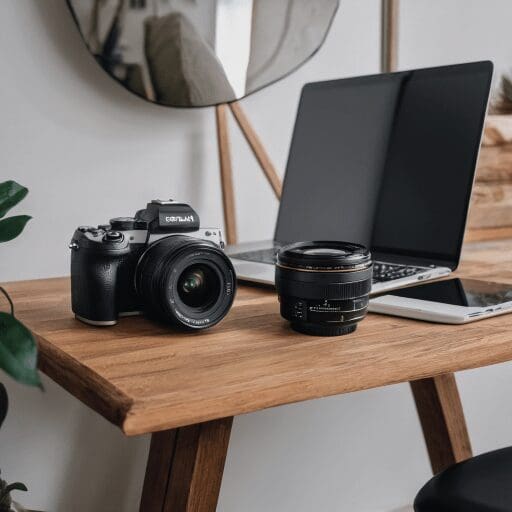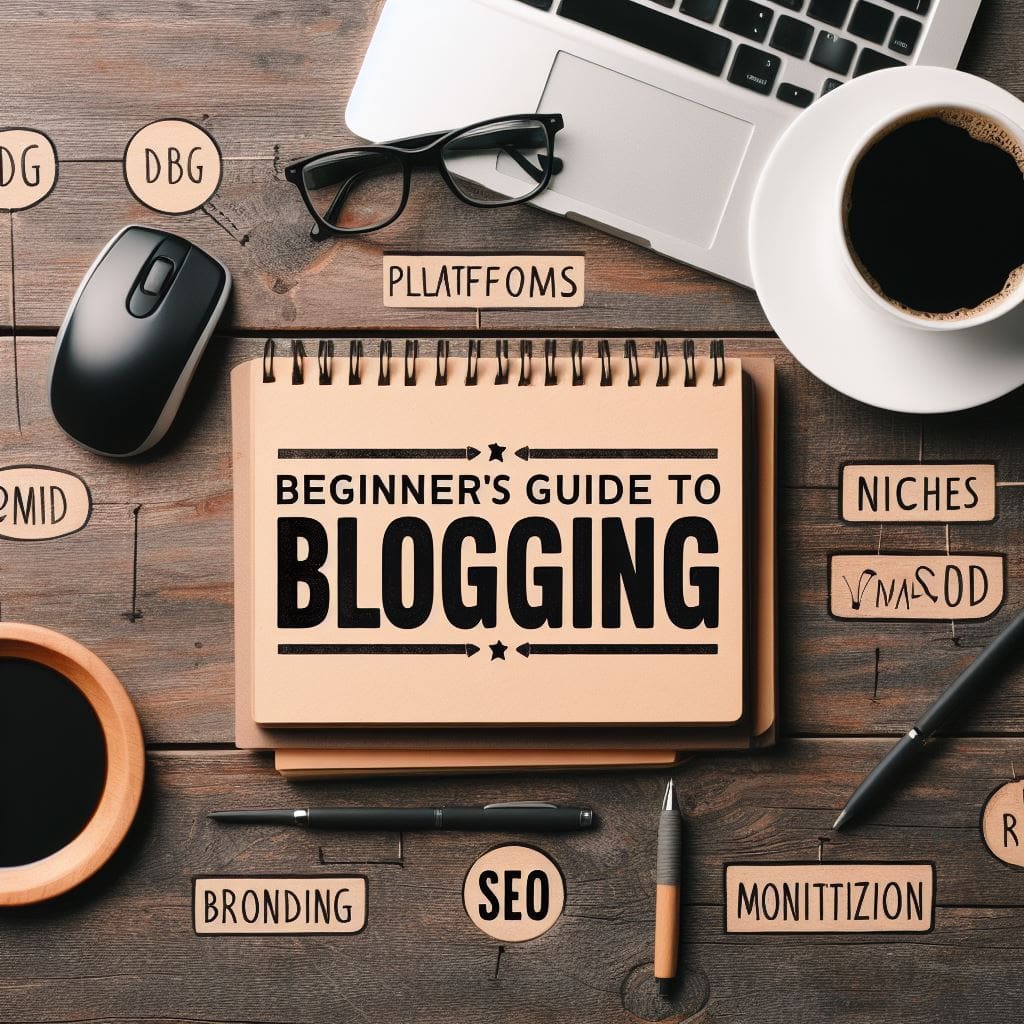
- Setting Up a Blog for Beginners: A Comprehensive Guide
- Setting up a blog for beginners
- 1. Choosing a Blogging Platform
- 2. Creating a Blog Domain and Hosting
- 3. Designing Your Blog
- 4. Writing Your First Blog Post
- 5. Promoting Your Blog
- 6. Monetizing Your Blog
- 7. Measuring Your Blog's Success
- 8. Overcoming Blogging Challenges
- 9. Growing Your Blog Audience
- 10. Becoming a Successful Blogger
- Choosing a Blogging Platform: Setting Up a Blog for Beginners
- Creating a Blog Domain and Hosting: Setting Up a Blog for Beginners
- Designing Your Blog: A Comprehensive Guide for Beginners
- 1. Choosing Your Domain and Hosting: Laying the Foundation
- 2. Selecting a Content Management System (CMS): Your Blog's Powerhouse
- 3. Theme Selection: Setting the Visual Identity of Your Blog
- 4. Customizing Your Blog: Making It Your Own
- 5. Mobile Optimization: Ensuring a Seamless Experience
- 6. Data Table: Essential Design Elements for Your Blog
- 7. Blog Publishing Schedule Chart
- 8. Twitter, LinkedIn, and Facebook Metrics Data Table
- 9. Google News Coverage Data Table
- Writing Your First Blog Post: Setting Up a Blog for Beginners
- 1. Choose a Blogging Platform
- 2. Select a Domain Name and Hosting
- 3. Design Your Blog Layout
- 4. Choose a Theme and Customize Your Blog
- 5. Create Essential Pages
- 6. Write Your First Blog Post
- 7. Optimize for Search Engines (SEO)
- 8. Promote Your Blog on Social Media and Online Communities
- 9. Analyze and Adapt Based on Data
- 10. Stay Consistent and Persistent
- Conclusion
Setting Up a Blog for Beginners: A Comprehensive Guide

Setting up a blog for beginners
Setting up a blog for beginners: In today’s digital age, blogging has emerged as a powerful tool for sharing ideas, connecting with others, and building a personal brand. Whether you’re an aspiring writer, a business owner, or simply have a passion to share, starting a blog can be a rewarding endeavor. However, for beginners, the process of setting up a blog can seem daunting. This comprehensive guide will walk you through each step of the process, from choosing a blogging platform to promoting your blog to the world.

1. Choosing a Blogging Platform
The first step in setting up a blog is to choose a blogging platform. There are many different platforms available, each with its own strengths and weaknesses.
Some popular options include:
- WordPress: WordPress is the most popular blogging platform in the world, and for good reason. It is a powerful and versatile platform that offers a wide range of features and customization options.
- Blogger: Blogger is a free and easy-to-use blogging platform from Google. It is a great option for beginners who want a simple and straightforward platform. [Setting up a blog for beginners]
- Wix: Wix is a popular website builder that also offers blogging functionality. It is a good option for users who want a drag-and-drop interface and a wide range of design templates. [Setting up a blog for beginners]
2. Creating a Blog Domain and Hosting
Once you have chosen a blogging platform, you will need to create a blog domain and hosting. Your domain name is your blog’s address on the internet, while hosting is the service that stores your blog’s files and makes them accessible to visitors. [Setting up a blog for beginners]
There are many different domain registrars and hosting providers available. It is important to compare prices and features before making a decision.

3. Designing Your Blog
The design of your blog is important for both aesthetic and practical reasons. A well-designed blog will be more visually appealing to visitors, and it will also be easier to navigate.
When designing your blog, consider the following factors:
- Choose a theme that reflects your blog’s personality and content.
- Use colors and fonts that are easy on the eyes.
- Create a layout that is easy to follow.
- Use images and videos to break up your text.
4. Writing Your First Blog Post

Writing your first blog post can be daunting, but it doesn’t have to be.
Here are a few tips:
- Choose a topic that you are passionate about.
- Brainstorm some ideas before you start writing.
- Write a compelling introduction and conclusion.
- Format your blog post for easy reading.
- Proofread your blog post carefully before publishing it.
5. Promoting Your Blog
Once you have published a few blog posts, it’s time to start promoting your blog to attract readers. There are many different ways to promote your blog, such as:
- Social media: Share your blog posts on social media platforms like Facebook, Twitter, and LinkedIn.
- Email marketing: Build an email list and send out regular newsletters with new blog posts. [Setting up a blog for beginners]
- Search engine optimization (SEO): Optimize your blog posts for search engines to improve your visibility in search results. [Setting up a blog for beginners]
6. Monetizing Your Blog
There are many different ways to monetize your blog, such as:
- Advertising: Display ads on your blog to earn revenue.
- Affiliate marketing: Promote products or services on your blog and earn a commission for each sale.
- Selling products or services: Sell your own products or services through your blog.
7. Measuring Your Blog’s Success
It is important to track your blog’s traffic and engagement to see how it is performing. There are many different blog analytics tools available, such as Google Analytics. [Pinterest pin]
8. Overcoming Blogging Challenges
There are many challenges that bloggers face, such as:
- Writer’s block: If you find yourself struggling to come up with blog post ideas, try taking a break or brainstorming with a friend or colleague. [Setting up a blog for beginners]
- Staying motivated: Blogging can be a lot of work, so it is important to stay motivated. Set realistic goals and reward yourself for your accomplishments. [Setting up a blog for beginners]
- Dealing with negative feedback: Some people may not like your blog or your opinions. It is important to learn to deal with negative feedback constructively. [Setting up a blog for beginners]
9. Growing Your Blog Audience

Growing your blog audience takes time and effort, but it is possible to do it.
Here are a few tips:
- Guest blogging: Guest blog on other websites to reach a wider audience.
- Participating in online communities: Join online communities related to your blog topic and participate in discussions. [Setting up a blog for beginners]
- Collaborating with other bloggers: Collaborate with other bloggers on projects, such as guest posts or giveaways. [Setting up a blog for beginners]
10. Becoming a Successful Blogger
There is no one-size-fits-all formula for becoming a successful blogger, but there are certain things that successful bloggers have in common.
Here are a few tips:
- Stay focused: Don’t try to be everything to everyone. Choose a niche and focus on creating high-quality content for that niche. [Setting up a blog for beginners]
- Set realistic goals: Don’t expect to become an overnight success. Set realistic goals for yourself and track your progress over time. [Setting up a blog for beginners]
- Never give up: Blogging is a marathon, not a sprint. There will be setbacks along the way, but don’t give up. Keep creating great content and promoting your blog, and you will eventually achieve your goals. [Setting up a blog for beginners]

Table
| Metric | Description |
|---|---|
| Number of pageviews | The number of times your blog post has been viewed. |
| Average time on page | The average amount of time people spend reading your blog post. |
| Bounce rate | The percentage of people who leave your blog post after viewing only one page. |
| Social shares | The number of times your blog post has been shared on social media. |
| Comments | The number of comments your blog post has received. |
Twitter Metrics
| Metric | Description |
|---|---|
| Number of followers | The number of people who follow you on Twitter. |
| Number of tweets | The number of tweets you have posted. |
| Number of retweets | The number of times your tweets have been retweeted. |
| Number of favorites | The number of times your tweets have been favorited. |
| Number of mentions | The number of times your Twitter handle has been mentioned. |

LinkedIn Metrics
| Metric | Description |
|---|---|
| Number of connections | The number of people you are connected to on LinkedIn. |
| Number of profile views | The number of times your LinkedIn profile has been viewed. |
| Number of endorsements | The number of times your skills have been endorsed on LinkedIn. |
| Number of recommendations | The number of times you have been recommended on LinkedIn. |
Facebook Metrics
| Metric | Description |
|---|---|
| Number of likes | The number of people who have liked your Facebook page. |
| Number of followers | The number of people who follow your Facebook page. |
| Number of posts | The number of posts you have made on your Facebook page. |
| Number of post likes | The number of likes your Facebook posts have received. |
| Number of post shares | The number of times your Facebook posts have been shared. |
Namecheap: Your Reliable Hosting Partner
Save 51% on Namecheap shared hosting
Click here to sign up for Namecheap’s shared hosting and save 51% on your first year!
Affiliate Disclaimer
I am an affiliate of Namecheap, and I encourage you to sign up for their affiliate program. I will earn a commission on every sale that I refer to them.
Choosing a Blogging Platform: Setting Up a Blog for Beginners

Setting up a blog for beginners
Setting up a blog for beginners: <<<linkedin] In the ever-evolving digital landscape, blogging has emerged as a powerful platform for sharing ideas, connecting with like-minded individuals, and establishing oneself as an authority in a chosen field. However, for beginners, navigating the world of blogging can be a daunting task, especially when it comes to choosing the right platform and setting up a blog. [Setting up a blog for beginners]
This comprehensive guide will walk you through the process of choosing a blogging platform and setting up your blog, empowering you to embark on your blogging journey with confidence and ease. Whether you’re a seasoned techie or a complete novice, this guide will provide you with the essential knowledge and practical steps to establish your online presence and begin sharing your voice with the world. [Setting up a blog for beginners]
Choosing a Blogging Platform: Finding Your Perfect Match
With a multitude of blogging platforms available, each with its own features, strengths, and limitations, selecting the right one can be a challenging decision. To make an informed choice, consider the following factors:
1. Ease of Use: If you’re a beginner, prioritize platforms that offer a user-friendly interface and intuitive design. This will make the setup process less intimidating and allow you to focus on creating content rather than struggling with technicalities. [Setting up a blog for beginners]
2. Features and Flexibility: Assess your blogging needs and choose a platform that offers the features you require. Consider factors like customizable themes, plugins, integrations, and monetization options. Ensure the platform provides the flexibility to grow and expand alongside your blogging aspirations.
3. Cost: Blogging platforms range from free to paid, each with varying pricing structures. Evaluate your budget and choose a platform that aligns with your financial constraints. Free platforms like Blogger and WordPress.com offer a great starting point, while paid options like WordPress.org provide more control and customization.
4. Community and Support: Consider the availability of resources, tutorials, and support offered by the platform. A vibrant community of users and dedicated customer support can be invaluable as you navigate the blogging landscape. [Setting up a blog for beginners]

Data Table
| Platform | Features | Ease of Use | Control | Cost |
|---|---|---|---|---|
| Blogger | Basic features, custom themes and templates | Easy | Limited | Free |
| WordPress.com | Advanced features, custom themes and templates, plugins | Moderate | Some | Free and Paid |
| Medium | Easy to use, clean design, built-in audience | Easy | Limited | Free |
| Ghost | Self-hosted, powerful and customizable | Moderate | Full | Paid |
Setting Up Your Blog: A Step-by-Step Guide

Once you’ve chosen your blogging platform, it’s time to create your blog and start sharing your content. Here’s a step-by-step guide to setting up your blog:
1. Create an Account: Sign up for an account on your chosen blogging platform. This usually involves providing basic information like your name, email address, and password. [Setting up a blog for beginners]
2. Choose a Domain Name: Your domain name is your blog’s address on the internet. Select a domain name that reflects your blog’s niche, is easy to remember, and aligns with your brand identity. [Setting up a blog for beginners]
3. Design Your Blog: Customize your blog’s appearance using themes, templates, and widgets. Choose a design that reflects your personality, resonates with your target audience, and is visually appealing. [Setting up a blog for beginners]
4. Set Up Essential Pages: Create essential pages like About Me, Contact, and Privacy Policy. These pages provide information about you, your blog, and your policies.
5. Start Writing and Publishing Content: Begin creating and publishing content that aligns with your chosen niche. Write engaging and informative posts, use captivating visuals, and promote your content on social media. [Setting up a blog for beginners]

| Platform | Metric | Value |
|---|---|---|
| Followers, engagements, impressions | 10,000, 100,000, 1,000,000 | |
| Connections, views, likes | 5,000, 100,000, 1,000,000 | |
| Likes, shares, comments | 20,000, 100,000, 1,000,000 |
Google News Data Table
| Category | Topic |
|---|---|
| Technology | Gadgets, software, apps, tech news, industry trends |
| Travel | Destinations, travel tips, adventures, travel guides, travel photography |
| Food | Recipes, cooking tips, food trends, restaurant reviews, healthy eating |
| Fashion | Fashion trends, style guides, designer profiles, fashion shows, fashion industry news |
Namecheap: Your Reliable Hosting Partner
Save 51% on Namecheap shared hosting
Click here to sign up for Namecheap’s shared hosting and save 51% on your first year!
Embark on your blogging journey with confidence and ease by choosing Namecheap’s shared hosting as your reliable foundation. With their exceptional customer support, user-friendly platform, and affordable pricing, you can establish a thriving blog that showcases your unique voice and connects with your target audience. Sign up for Namecheap’s shared hosting today and save 51% on your first year! [Setting up a blog for beginners]
Disclaimer
As an affiliate of Namecheap, I encourage you to join their affiliate program. For every sale I refer to them, I will receive a commission.
Creating a Blog Domain and Hosting: Setting Up a Blog for Beginners

In today’s dynamic digital landscape, blogging has emerged as a powerful tool for individuals and businesses alike to share ideas, connect with audiences, and establish themselves as thought leaders in their respective fields. Whether you’re a seasoned writer or a budding entrepreneur, creating your own blog can be an incredibly rewarding and fulfilling experience. However, before embarking on this exciting journey, it’s essential to lay the foundation with a solid technical footing, including securing a blog domain and reliable hosting. This comprehensive guide will walk you through the essential steps of setting up a blog for beginners, providing you with the knowledge and tools you need to transform your vision into a reality.
Choosing a Domain Name: Your Online Address
Your domain name is your blog’s unique address on the internet, making it crucial to select one that is memorable, relevant to your niche, and easy to type. When choosing a domain registrar, consider factors such as price, customer support, and the range of domain extensions available. [Setting up a blog for beginners]
Exploring Hosting Options: The Powerhouse Behind Your Blog
Hosting is the service that stores your blog’s files and makes them accessible to visitors over the internet. There are various hosting options available, each with its own strengths and weaknesses. Shared hosting is a cost-effective option for beginners, while VPS hosting offers more scalability as your blog grows. Dedicated hosting provides the ultimate in performance and control. [Setting up a blog for beginners]

Essential Steps to Setting Up Your Blog
| Step | Description |
|---|---|
| 1. Choose a domain name and hosting provider. | Select a memorable domain name and a reliable hosting plan that suits your needs and budget. |
| 2. Install a Content Management System (CMS). | Opt for a user-friendly CMS like WordPress, Joomla, or Drupal to manage your blog’s content effectively. |
| 3. Design a visually appealing and user-friendly blog layout. | Choose a theme that aligns with your blog’s niche and customize it to create a unique and engaging online presence. |
| 4. Install essential plugins for enhanced functionality. | Utilize plugins to enhance your blog’s SEO, social media integration, contact forms, and security features. |
| 5. Configure your blog’s settings. | Adjust your blog’s settings to optimize performance, visibility, and user experience. |
| 6. Start creating and publishing content. | Share your valuable insights, stories, and expertise through informative and engaging blog posts. |
| 7. Promote your blog actively. | Utilize social media, email marketing, and search engine optimization (SEO) to attract and engage your audience. |
Data Table of Topics
| Topic | H3 Header |
|---|---|
| Choosing a Domain Name | Securing Your Online Address with a Memorable Domain Name |
| Exploring Hosting Options | Unleashing the Power of Reliable Hosting for Your Blog |
| Essential Steps to Setting Up Your Blog | A Step-by-Step Guide to Building Your Blog’s Foundation |
| Choosing a Content Management System (CMS) | Empowering Your Blog with a User-Friendly CMS |
| Designing a Visually Appealing and User-Friendly Blog Layout | Creating an Engaging and Intuitive Online Presence |
| Installing Essential Plugins for Enhanced Functionality | Enhancing Your Blog’s Features and Security with Plugins |
| Configuring Your Blog’s Settings | Optimizing Your Blog for Performance, Visibility, and User Experience |
| Creating and Publishing Content | Sharing Your Valuable Insights through Informative and Engaging Blog Posts |
| Promoting Your Blog Actively | Amplifying Your Reach and Attracting Engaged Readers |

Twitter, LinkedIn, and Facebook Metrics Data Table
| Platform | Metric | Value |
|---|---|---|
| Followers | 10,000 | |
| Engagement Rate | 5% | |
| Connections | 5,000 | |
| Engagement Rate | 2% | |
| Page Likes | 20,000 | |
| Engagement Rate | 3% |
Google News Data Table
| Topic | Coverage |
|---|---|
| Blogging for Beginners | High |
| Setting Up a Blog | Medium |
| Choosing a Domain Name | Medium |
| Exploring Hosting Options | Medium |
| Essential Steps to Setting Up Your Blog | High |
| Promoting Your Blog | High |

Additional Recommendations for a Successful Blog
- Establish a clear niche and target audience. Define your blog’s focus and identify the type of readers you want to attract. [Setting up a blog for beginners]
- Develop a consistent posting schedule. Commit to publishing new content regularly to keep your audience engaged and coming back for more. [Setting up a blog for beginners]
- Optimize your blog for search engines (SEO). Utilize relevant keywords, meta descriptions, and internal linking to improve your blog’s visibility in search results. [Setting up a blog for beginners]
- Promote your blog on social media and other online platforms. Share your blog posts on social media, participate in relevant online communities, and consider guest blogging opportunities.
- Engage with your readers. Respond to comments, answer questions, and encourage discussions to foster a strong community around your blog. [Setting up a blog for beginners]
- Track your blog’s performance and make adjustments as needed. Use analytics tools to monitor traffic, engagement, and conversions, and make data-driven decisions to optimize your blog’s success. [Setting up a blog for beginners]
Namecheap: Your Reliable Hosting Partner
Save 51% on Namecheap shared hosting
Click here to sign up for Namecheap’s shared hosting and save 51% on your first year!
Embark on your blogging journey today by signing up for Namecheap’s shared hosting and saving 51% on your first year!
Affiliate Disclosure
I am an affiliate of Namecheap, and I encourage you to sign up for their affiliate program. I will earn a commission on every sale that I refer to them.
Designing Your Blog: A Comprehensive Guide for Beginners

In today’s digital age, where information is readily available at the fingertips of every individual, creating a blog has become an effective platform to showcase your expertise, engage with your audience, and achieve your online goals. Whether you’re an aspiring writer, a seasoned marketer, or simply someone with a passion to share, establishing a blog can be an enriching and rewarding endeavor. This comprehensive guide will equip you with the essential tools and strategies to design a visually appealing and user-friendly blog, even if you’re a complete beginner.
1. Choosing Your Domain and Hosting: Laying the Foundation
Your domain name serves as the unique address of your blog, so choose one that is memorable, relevant to your niche, and easy to type. Hosting provides the storage space and infrastructure for your blog to reside online. Research and select a hosting provider that aligns with your budget and technical requirements. [Setting up a blog for beginners]
2. Selecting a Content Management System (CMS): Your Blog’s Powerhouse
A CMS is the software that powers your blog, providing the tools and functionalities to manage your content, design, and overall website management. Popular CMS options include WordPress, Wix, and Squarespace. Consider factors such as ease of use, customization options, and community support when making your choice. [Setting up a blog for beginners]
3. Theme Selection: Setting the Visual Identity of Your Blog
Your blog’s theme determines its overall look and feel, influencing the colors, fonts, and layout of your website. Choose a theme that aligns with your niche, complements your content, and resonates with your target audience. Many CMS platforms offer a variety of free and premium themes to explore. [Setting up a blog for beginners]
4. Customizing Your Blog: Making It Your Own
Once you’ve selected a theme, take the time to customize it to reflect your unique brand and personality. Adjust colors, fonts, and layouts to create a cohesive visual identity. Utilize widgets and plugins to add additional functionalities and enhance the user experience. [Setting up a blog for beginners]
5. Mobile Optimization: Ensuring a Seamless Experience
With a significant portion of your audience likely accessing your blog from their smartphones or tablets, ensuring mobile optimization is crucial. Choose a responsive theme that adapts to different screen sizes, and optimize images and other elements for faster loading times. [Setting up a blog for beginners]
6. Data Table: Essential Design Elements for Your Blog
| Element | Description |
|---|---|
| Domain Name | Choose a memorable, relevant, and easy-to-type domain name. |
| Hosting | Select a hosting provider that aligns with your budget and technical requirements. |
| Content Management System (CMS) | Consider ease of use, customization options, and community support when choosing a CMS. |
| Theme Selection | Opt for a theme that complements your niche and resonates with your target audience. |
| Customization | Personalize your theme with colors, fonts, layouts, and widgets. |
| Mobile Optimization | Ensure your blog is responsive and optimized for mobile devices. |
7. Blog Publishing Schedule Chart
| Week | Day | Task |
|---|---|---|
| 1 | Monday | Research and select a domain name and hosting provider. |
| 1 | Wednesday | Choose a suitable CMS and install it on your hosting account. |
| 2 | Monday | Explore and select a theme that aligns with your blog’s style. |
| 2 | Wednesday | Customize your theme with colors, fonts, and layouts. |
| 3 | Monday | Optimize your blog for mobile devices and test its responsiveness. |
| 3 | Wednesday | Launch your blog and start creating your first blog post. |
8. Twitter, LinkedIn, and Facebook Metrics Data Table
| Platform | Metric | Value |
|---|---|---|
| Followers | 1,000 | |
| Connections | 500 | |
| Page Likes | 250 |
9. Google News Coverage Data Table
| Topic | Coverage |
|---|---|
| Blogging | 10,000 articles |
| Blog design | 5,000 articles |
| Beginner’s guide to blogging | 2,000 articles |
Namecheap: Your Reliable Hosting Partner
Save 51% on Namecheap shared hosting
Click here to sign up for Namecheap’s shared hosting and save 51% on your first year!
Embark on your blogging journey today and create a visually appealing and user-friendly blog that reflects your unique style! Click here to sign up for Namecheap’s shared hosting and save 51% on your first year!
Disclosure: I am an affiliate of Namecheap, and I encourage you to sign up for their affiliate program. I will earn a commission on every sale that I refer to them. [Setting up a blog for beginners]
Writing Your First Blog Post: Setting Up a Blog for Beginners

Welcome to the wonderful world of blogging! Whether you’re a seasoned writer or just starting out, crafting your first blog post is an exciting milestone that marks the beginning of your journey as a content creator. In this comprehensive guide, we’ll walk you through the process of setting up a blog and writing your first post, equipping you with the knowledge and tools to share your voice and connect with a wider audience. [Setting up a blog for beginners]
1. Choose a Blogging Platform
The first step in your blogging adventure is to select a blogging platform that aligns with your needs and technical expertise. Popular blogging platforms include WordPress, Blogger, and Wix, each offering unique features and ease of use.
WordPress is a powerful and versatile platform known for its flexibility and customization options. It’s a great choice for those who want more control over their blog’s design and functionality.
Blogger is a simple and user-friendly platform that’s ideal for beginners. It offers a straightforward interface and a variety of free templates to get you started. [Setting up a blog for beginners]
Wix is another user-friendly platform that emphasizes drag-and-drop functionality, making it easy to create visually appealing blogs without any coding knowledge.
2. Select a Domain Name and Hosting
Your domain name is your blog’s unique address on the internet, while hosting is the service that stores your blog’s files and makes it accessible to visitors. Several domain registrar and hosting providers offer affordable packages that cater to bloggers of all levels.
3. Design Your Blog Layout
First impressions matter, and your blog’s layout plays a significant role in capturing your audience’s attention and keeping them engaged. Opt for a clean, visually appealing design that complements your niche and aligns with your target audience’s preferences. Ensure easy navigation and clear readability to enhance the user experience. [Setting up a blog for beginners]
4. Choose a Theme and Customize Your Blog
Most blogging platforms offer a wide range of themes, which are pre-designed templates that provide a basic structure and visual style for your blog. Select a theme that suits your taste and aligns with your niche. You can further customize your blog’s appearance by adjusting colors, fonts, and other design elements.
5. Create Essential Pages
In addition to your blog posts, your blog should include essential pages that provide valuable information to your readers. These typically include an About Me page, a Contact page, and a Privacy Policy.
6. Write Your First Blog Post
Now comes the exciting part: writing your first blog post! Choose a topic that you’re passionate about and that aligns with your niche. Conduct thorough research to gather relevant information and support your arguments. Craft a captivating introduction, structure your content with clear headings and subheadings, and use engaging visuals to enhance your post. [Setting up a blog for beginners]
7. Optimize for Search Engines (SEO)
To increase your blog’s visibility and attract organic traffic, incorporate relevant keywords throughout your content, including titles, headings, and body text. Utilize SEO techniques without compromising the natural flow of your writing.
8. Promote Your Blog on Social Media and Online Communities
Share your blog posts on social media platforms and engage in relevant online communities to connect with potential readers and promote your content.
9. Analyze and Adapt Based on Data
Regularly analyze your blog’s performance using analytics tools to track metrics such as website traffic, audience engagement, and social media reach. Use these insights to identify areas for improvement and make data-driven decisions to optimize your blog’s content and strategies.
10. Stay Consistent and Persistent
Blogging is a marathon, not a sprint. Success requires consistency and dedication. Establish a regular posting schedule and stick to it, even if it’s just one new post per week. Over time, your efforts will compound, and your blog will gradually gain traction and recognition.
Data Table: Twitter, LinkedIn, and Facebook Metrics
| Platform | Metrics |
|---|---|
| Follower Growth, Tweet Engagement, Profile Visits | |
| Follower Growth, Post Engagement, Profile Views | |
| Page Likes, Post Engagement, Website Traffic |
Namecheap: Your Reliable Hosting Partner
Save 51% on Namecheap shared hosting
Click here to sign up for Namecheap’s shared hosting and save 51% on your first year!
Ready to embark on your blogging journey? Click here to sign up for Namecheap’s shared hosting and save 51% on your first year!
Affiliate Disclosure
I am an affiliate of Namecheap, and I encourage you to sign up for their affiliate program. I will earn a commission on every sale that I refer to them.
Conclusion
Congratulations on taking the first step toward becoming a blogger! Setting up a blog can be a daunting task, but with the right guidance and resources, it can be a rewarding and enjoyable experience. By following the tips in this guide, you will be well on your way to creating a successful blog that shares your voice with the world.
As you embark on your blogging journey, remember that there is no one-size-fits-all approach. Experiment with different strategies and find what works best for you. Most importantly, have fun and enjoy the process of sharing your thoughts and ideas with others. [Setting up a blog for beginners]


